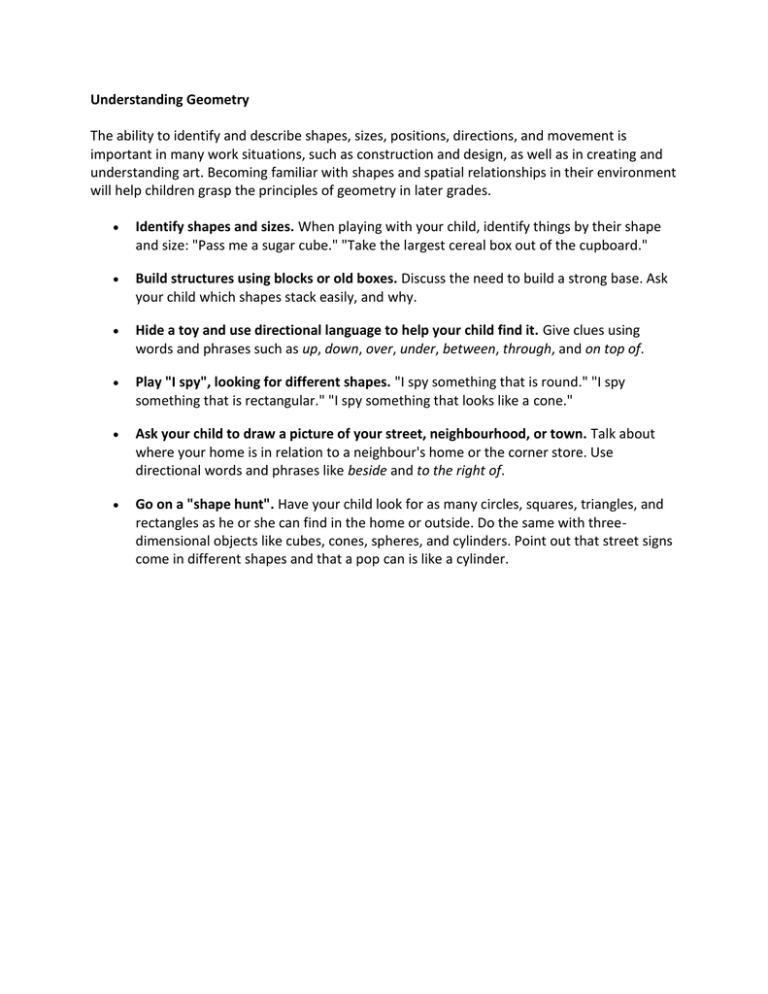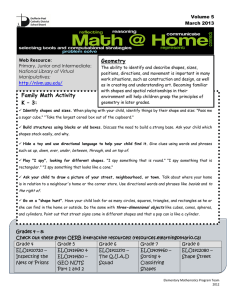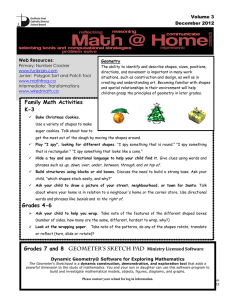Understanding Geometry The ability to identify and describe shapes
advertisement

Understanding Geometry The ability to identify and describe shapes, sizes, positions, directions, and movement is important in many work situations, such as construction and design, as well as in creating and understanding art. Becoming familiar with shapes and spatial relationships in their environment will help children grasp the principles of geometry in later grades. Identify shapes and sizes. When playing with your child, identify things by their shape and size: "Pass me a sugar cube." "Take the largest cereal box out of the cupboard." Build structures using blocks or old boxes. Discuss the need to build a strong base. Ask your child which shapes stack easily, and why. Hide a toy and use directional language to help your child find it. Give clues using words and phrases such as up, down, over, under, between, through, and on top of. Play "I spy", looking for different shapes. "I spy something that is round." "I spy something that is rectangular." "I spy something that looks like a cone." Ask your child to draw a picture of your street, neighbourhood, or town. Talk about where your home is in relation to a neighbour's home or the corner store. Use directional words and phrases like beside and to the right of. Go on a "shape hunt". Have your child look for as many circles, squares, triangles, and rectangles as he or she can find in the home or outside. Do the same with threedimensional objects like cubes, cones, spheres, and cylinders. Point out that street signs come in different shapes and that a pop can is like a cylinder.


